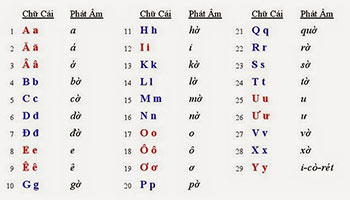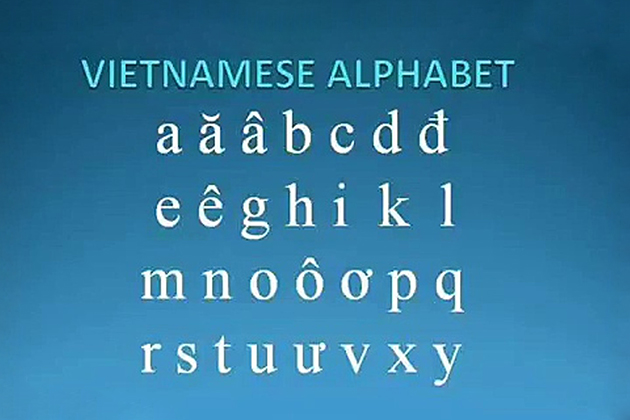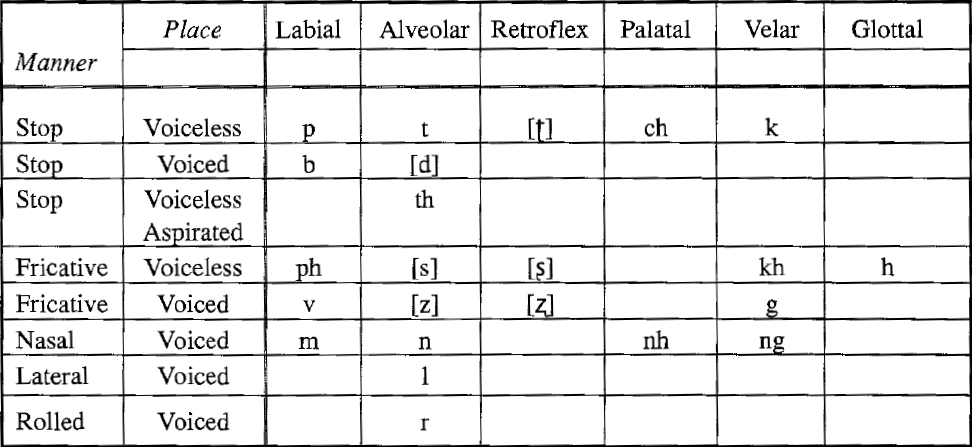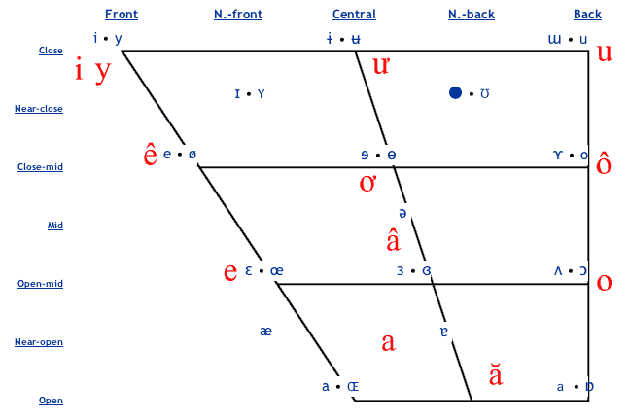Vietnamese is a very ancient-origin language and has undergone a very long development process, full of vitality. That is expressed throughout the durable struggle of a nation that built, preserved, and developed a national language and national literature. Vietnamese Alphabet is a national standard script known as Chu Quoc Ngu in Vietnamese. It is a modern writing system that used the Latin script. Vietnam tour operators will share everything you need to know about the Vietnamese Alphabet Pronunciation, from consonants to tones, to help you prepare for an immersive travel experience in Vietnam. A full twenty-nine alphabets are shown as follow:
Each letter has two normal and capitalizing forms of writing. A single letter no longer used anymore is ( ). This letter had been used to describe a consonant /β/ of the old Vietnamese language before the 19th century. It was now transformed into consonants “b” and “v” in the modern Vietnamese.
Vietnamese Alphabet Pronunciation: The Basics
The Vietnamese Alphabet Pronunciation system includes 29 letters, with each letter having both lowercase and uppercase forms. A letter no longer in use is ( ). This letter once represented the consonant /β/ in old Vietnamese before the 19th century but has since evolved into the modern consonants “b” and “v”. Understanding Vietnamese Alphabet Pronunciation is key to communicating effectively during your trip.
Consonants in Vietnamese Alphabet Pronunciation
Chu Quoc Ngu has now 17 consonants including b, c, d, đ, g, h, k, l, m, n, p, q, r, s, t, v, x and 11 compounds indicating consonants in which there are 10 digraphs consisting of ch, gh, gi, kh, ng, nh, ph, qu, th, tr; and only trigraph “ngh”.
There are four compounds indicating consonants not used in the modern Vietnamese anymore:
- tl: Indicate double consonants / tl / of the Middle Vietnamese. It was transformed into a consonant “p” of the modern Vietnamese.
- bl: Indicate double consonants / ɓl / of the Middle Vietnamese. It was transformed into consonants “p”, “gi” of the modern Vietnamese.
- ml: Indicate double consonants/ml / of the Middle Vietnamese. It was transformed into a consonant “nh” of the modern Vietnamese.
- mnh: Indicates double consonants / mɲ / of the Middle Vietnamese. It was transformed into the consonant “nh” of the modern Vietnamese.
Four letters “f”, “j”, “w” and “z” are not part of the Vietnamese alphabet, now they are used in foreign loan words. They are all rooted in French, for example, “f” is from “effe” /ɛf/, “j” is from “ji” /ʒi/, “w” is from “double vé” /dubləve/, “z” is from “zède” /zɛd/.
The special digraph “gh” and the trigraph “ngh” are almost basically used before vowels of “i”, “e”, “ê”.
Vowels in Vietnamese Alphabet Pronunciation
Vietnamese Alphabet has 11 single vowels a, ă, â, e, ê, i, y, o, ô, ơ, u and ư. Besides, there are 32 diphthongs such as ai, ao, au, âu, ay, ây, eo, êu, ia, iê/yê, iu, oa, oă, oe, oi, ôi, ơi, oo, ôô, ua, uâ, ưa, uê, ui, ưi, uo, uô, uơ, ươ, ưu and uy and 13 triphthongs such as iêu/yêu, oai, oao, oeo, uao, uây, uôi, ươi, ươu, uya, uyê, uyu.
Notably, 12 vowels: ă, â, iê, oă, oo, ôô, uâ, uă, uô, ươ, uyê, yê must be added final syllables following rules as below:
- Plus final vowel or consonant: â, iê, uâ, uô, ươ, yê.
- Plus final consonant: ă, oă, oo, ôô, uă, uyê.
4 vowels “oa, oe, ue, uy” can stand alone or add first and final syllables.
29 vowels are not allowed to be added final syllables including ai, ao, au, âu, ay, ây, eo, êu, ia, iêu/yêu, iu, oi, ôi, ơi, oai, oao, oay, oeo, ưa, ui, ưi, ưu, uơ, uai, uây, uôi, ươi, ươu, uya and uyu.
Vietnamese Alphabet Tones
Vietnamese is a tonal language. The Northern Vietnamese has 6 tones and the Southern Vietnamese has 5 tones. These six tones are noted as follows:
- Level (không dấu): a, ă, â, e, ê, i, o, ô, ơ, u, ư, y
- Acute accent (dấu sắc): á. ắ, ấ, é, ế, í, ó, ố, ớ, ú, ứ, ý
- Grave accent (dấu huyền): à, ằ, ầ, è, ề, ì, ò, ồ, ờ, ù, ừ, ỳ
- Hook (dấu hỏi): ả, ẳ, ẩ, ẻ, ể, ỉ, ỏ, ổ, ở, ủ, ử, ỷ
- Tilde (dấu ngã): ã, ẵ, ẫ, ẽ, ễ, ĩ, õ, ỗ, ỡ, ũ, ữ, ỹ
- Dot below (dấu nặng): ạ, ặ, ậ, ẹ, ệ, ị, ọ, ộ, ợ, ụ, ự, ỵ
Practicing these tones will help you speak naturally and connect with locals more easily.
Why Learn Vietnamese Alphabet Pronunciation?
Learning Vietnamese Alphabet Pronunciation not only helps you communicate but also deepens your connection to Vietnam’s culture. Whether you’re ordering food or exploring markets, knowing the basics can make your trip unforgettable. To truly experience the language and culture, consider joining a cultural tour where you can practice with locals and explore Vietnam’s rich heritage.
Frequently Asked Questions
How can I practice Vietnamese Alphabet Pronunciation?
Start by listening to native speakers and practicing the 6 tones. Immersing yourself in the culture through travel can also help you practice in real-life settings.
Why is Vietnamese Alphabet Pronunciation important for travelers?
It helps you communicate better, from reading signs to speaking with locals, making your trip more immersive and enjoyable.
Ready to explore Vietnam while learning its language? Book a cultural tour today and immerse yourself in the beauty of Vietnam!





